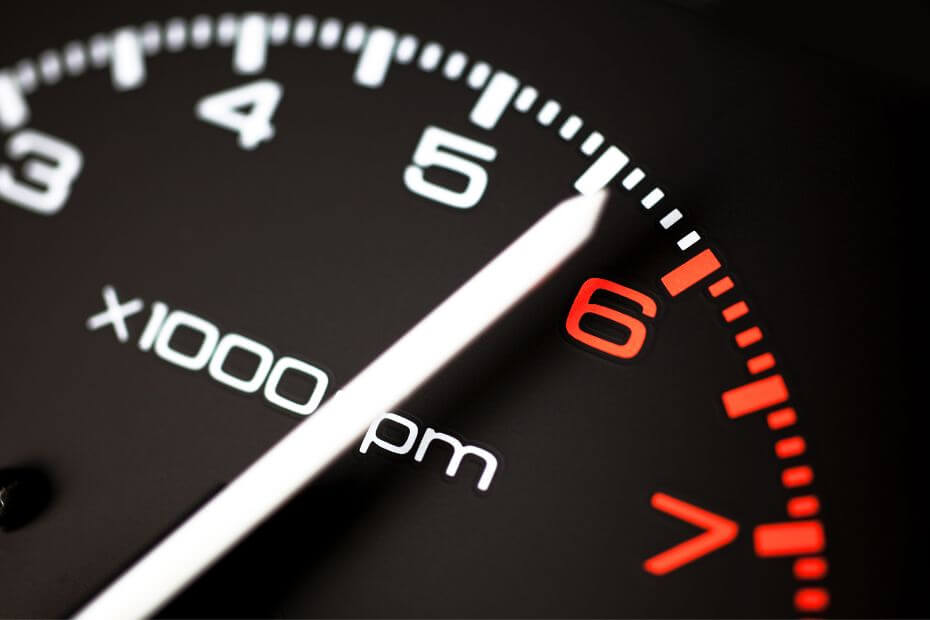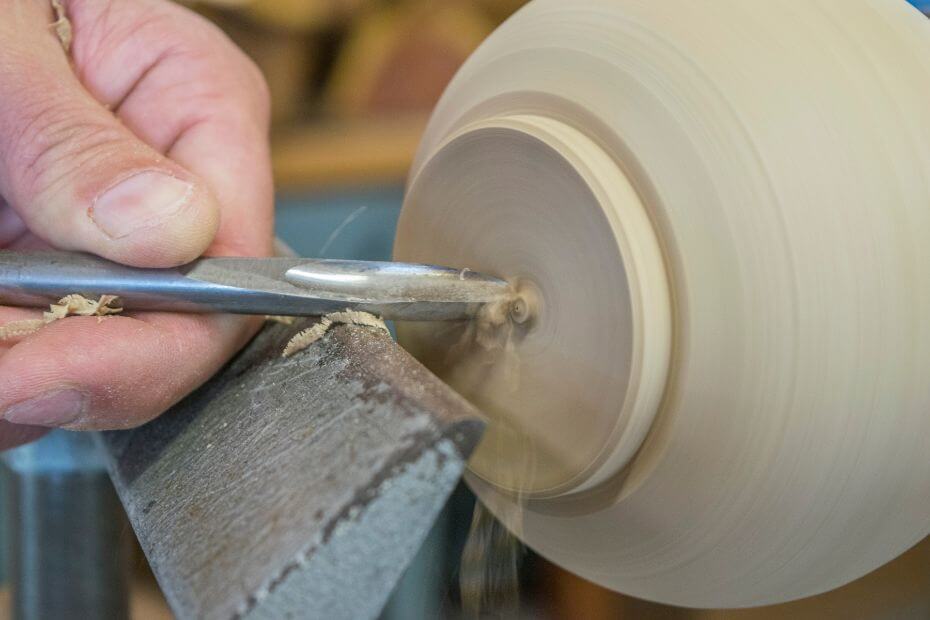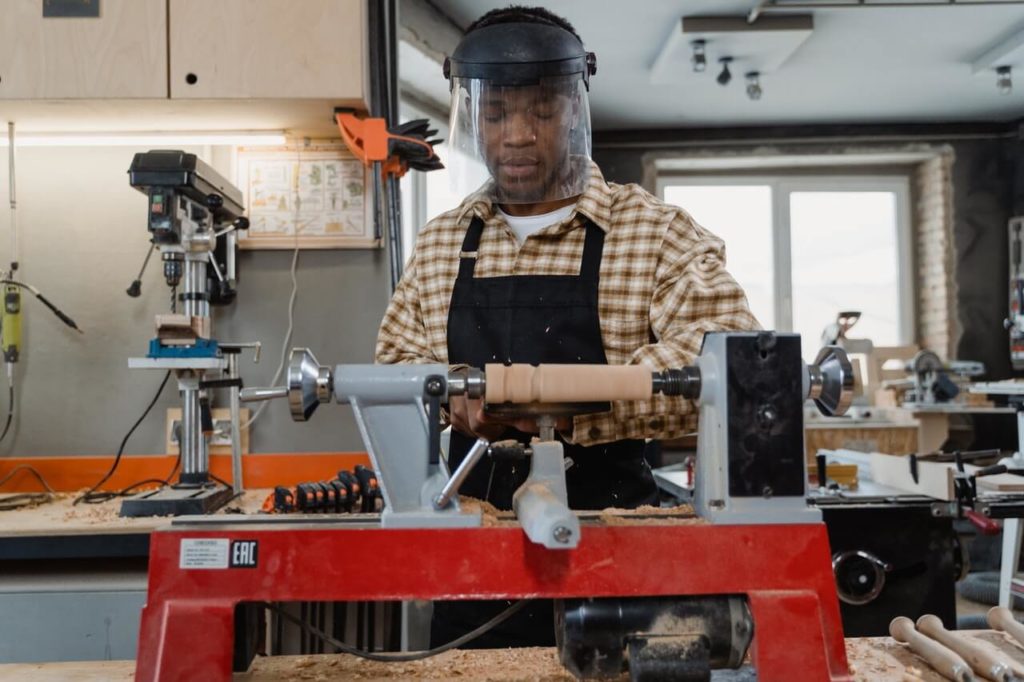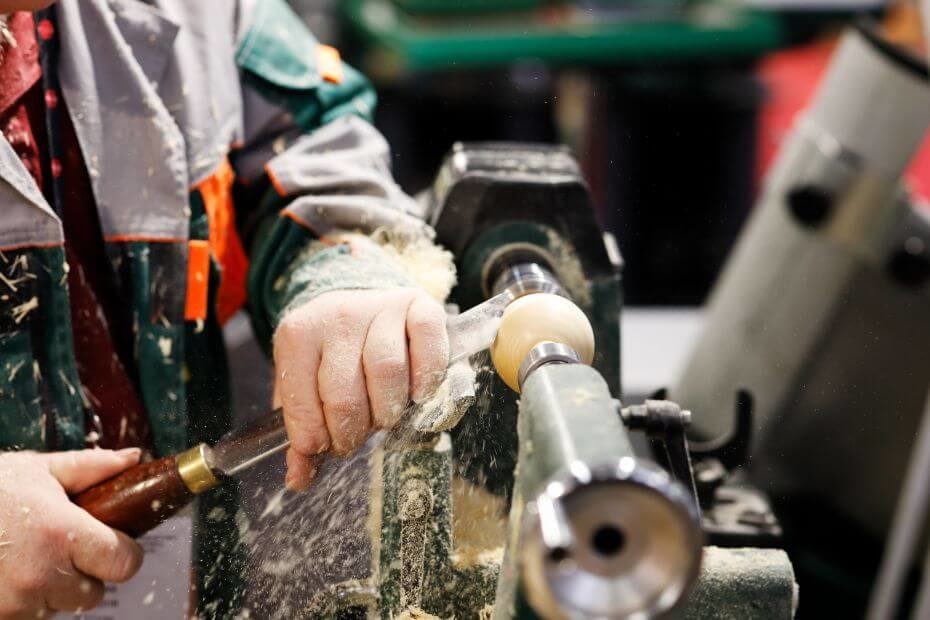If you’re like most woodturners without experience, you want to use the fastest speed possible on your lathe. But how do you know which speed is safe? Having the correct lathe speed will allow blanks to turn without much vibration so that tools produce a clean surface.
In this Wood Lathe Speed Guide, we’ll help you figure out the safest speed for your lathe and avoid dangerous accidents.
Wood Lathe Speed Guide
The optimal turning speed of a particular piece is dependent on factors including its size, hardness of the wood, and whether it is balanced. Considering your comfort is also essential. Therefore, there is no set rule that you must precisely follow but the formula below is a great place to start.
Let’s take a look at how to determine the safe speed for your lathe. You can use a simple formula for this. For imperial measurement, you have to divide 6000 by the diameter of the workpiece and you will get the minimum safest speed. In order to find the maximum safest speed, you divide 9000.
Here is a quick example:
Diameter of the workpiece: 12in
Divided by 6000
The Minimum Safest Speed is 500
Now let’s calculate the maximum safest speed:
Diameter of the workpiece: 12in
Divide by 9000
The Maximum Safest Speed is 750
Now, what do you do if you work in metric measurements? In that case, you divide 15000 by the diameter of the workpiece in centemeters.
Wood Lathe Speed Calculator
You can use this calculator to find the safe minimum and maximum speeds in inches:
Lathe Speed Chart
If you don’t want to use the calculator you can check out this chart:
| Diameter (inches) | Minimum Safe Speed | Maximum Safe Speed |
| 1 | 6000 | |
| 2 | 3000 | 4500 |
| 3 | 2000 | 3000 |
| 4 | 1500 | 2250 |
| 5 | 1200 | 1800 |
| 6 | 1000 | 1500 |
| 7 | 857 | 1286 |
| 8 | 750 | 1125 |
| 9 | 667 | 1000 |
| 10 | 600 | 900 |
| 11 | 545 | 818 |
| 12 | 500 | 750 |
| 13 | 462 | 692 |
| 14 | 429 | 643 |
| 15 | 400 | 600 |
| 16 | 375 | 562 |
| 17 | 353 | 529 |
| 18 | 333 | 500 |
| 19 | 316 | 474 |
| 20 | 300 | 450 |
| 21 | 286 | 429 |
| 22 | 273 | 409 |
| 23 | 261 | 391 |
| 24 | 250 | 375 |
RPM vs Size – General Guidelines
Here are some general guidelines on wood lathe speeds:
- You can work on smaller objects at higher RPMs while larger objects require lower RPM.
Small objects like pens or small boxes can tolerate high speeds of 1500-3000 RPM. There are times when this speed is desirable because skew chisels cut better and cleaner.
Lowering the RPM is necessary for several reasons when dealing with large objects. They are heavier and more likely to cause vibration on your lathe.
- Objects that are out of balance need low RPM.
Turning large objects can often cause them to become unbalanced. You can use your band saw or chain saw to make the object more round and balanced.
- The thinner a vase becomes, the slower its RPM needs to be.
- Slower RPM is needed for soft, spalted, weak timber.
- Lathes that are small and lightweight require slower RPM.
- A weak attachment of timber to the lathe results in a need for slower RPM.
Tachometer

A tachometer is a device that measures the speed of rotation of a rotary object, such as a motor or propeller. It usually has an analog display and is used to measure engine speed or propeller RPM.
If you want to get the right speed but your lathe does not have a digital readout you can install a tachometer. You can get one online and it can be used to determine the speed of your lathe.
This permanently mounted device helps you get accurate readings. When I’ve used the tachometer for a while, I come to know my RPM through the sound of the motor.
What Is The Best Speed To Run A Wood Lathe While Turning A Bowl?

One thousand RPMs seems to be a magical point at which bowl blanks either go up or down if they come off the lathe. Therefore, a wooden lathe should never go over 1,000 RPMs. If one bowl blank dislodges because the speed is under 1,000 RPMs, then it should just fall to the floor.
Why Safety Is Very Important

A wood lathe is a versatile tool that has been used for centuries to create bowls, spindles, and other turned objects. It is important to operate the lathe at the correct speed in order to avoid accidents.
When the piece is turned on a lathe is subjected to centrifugal force and its imbalance creates vibrations, it usually does so at speeds high enough that the blank tries to fly off the machine. The imbalance of weight in the workpiece is causing the vibration.
Improper alignment can be caused by a blank not being centered properly on a chuck, faceplate, or square stock, and sometimes even moisture differences in the wood.
The workpiece can fly off and hit you so hard that you may have to go to the hospital! Sometimes the damage is so high that you might not fully recover. Even with a face shield, there is still some danger in using improper speeds on your lathe.
Another dangerous situation is when the piece of wood you are working on has defects or a crack running through it. If you are turning a blank that has a crack, you should stop. The vibration and speed will cause the crack to open up and will eventually fly off. This can put you in some serious danger because you may get hit by the piece that breaks from that blank.
Also Read: Best Face Shields for Woodturning
Conclusion
In conclusion, it is important to be aware of the safe speeds for your wood lathe. Increasing the speed too much can result in accidents. Always start with the lowest speed and work your way up until you find the right speed for the project you are working on.
Be patient and take your time to ensure that you are using the correct speed for the material you are working with.
I hope this Beginners Wood Lathe Speed Guide was helpful and you learned something new.
